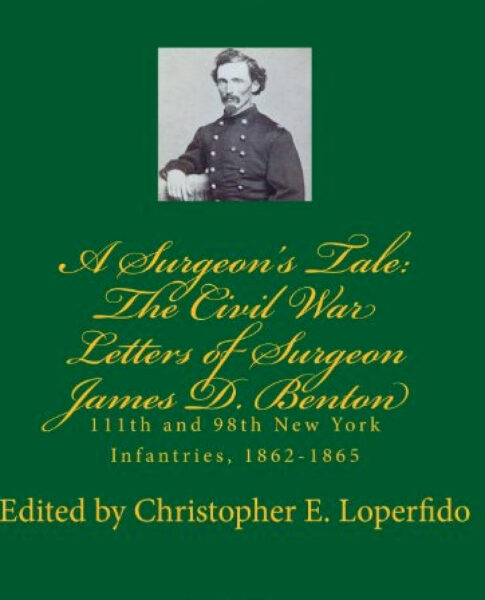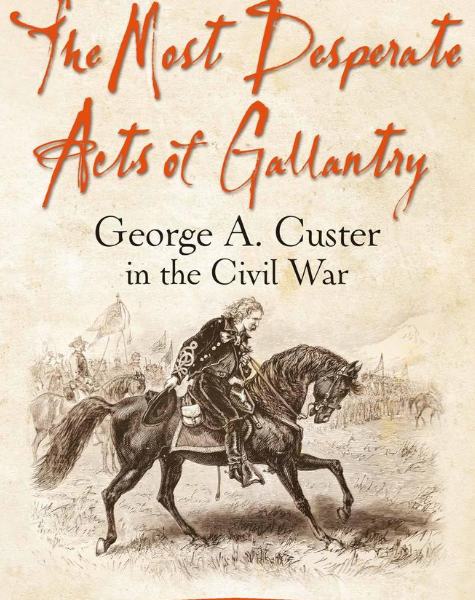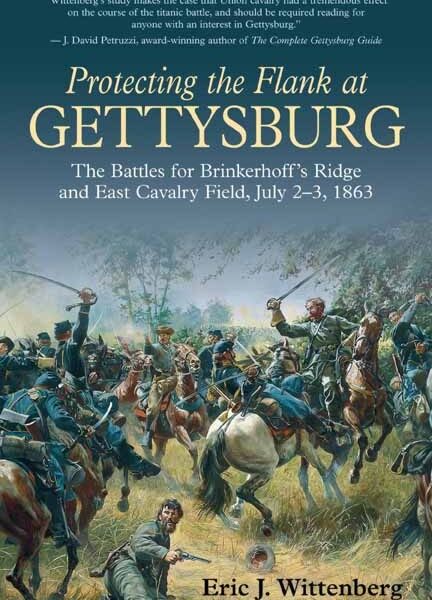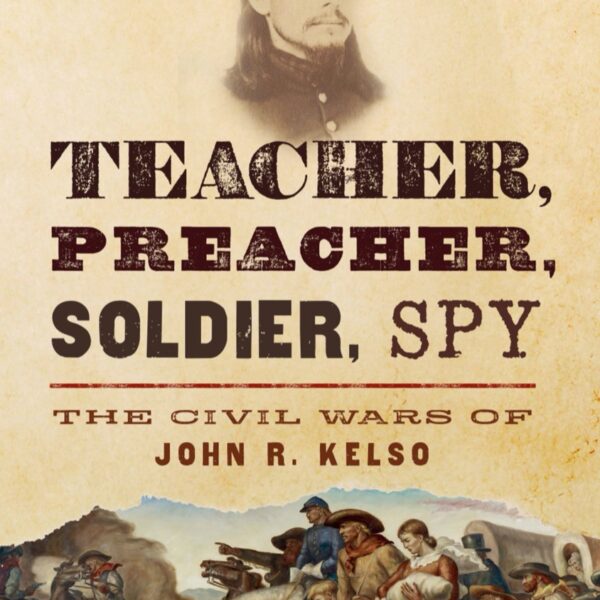Excommunicated from the Union: How the Civil War Created a Separate Catholic America by William B. Kurtz. Fordham University Press, 2015. Paper, ISBN: 978-0823268863. $35.00.
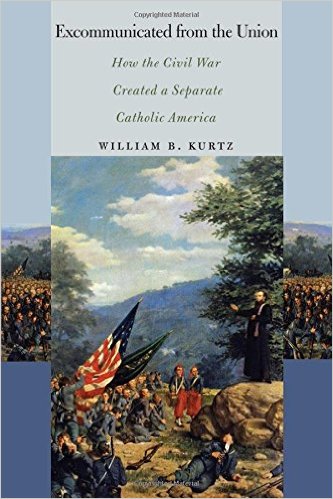 I recently participated in a conference panel on the politics of anti-Catholicism. After my co-panelists and I finished delivering our papers, the panel’s chair posed a provocative question: Is the frame of anti-Catholicism in American history useful anymore, or does it instead obscure matters? I do not believe that the question was meant to dismiss the subject of anti-Catholicism itself. That would be impossible in a country whose history has included such organizations as the Know-Nothing Party, the American Protective Association, and the Ku Klux Klan, and such events as the 1834 destruction of the Ursuline Convent in Charlestown, Massachusetts, and the religiously inspired backlash against Al Smith’s presidential campaign in 1928. Rather, I think that what the question was drawing attention to was this: the tendency among scholars to focus on Catholic exclusion rather than to emphasize the many examples of Catholic inclusion in the American polity. If this conclusion is correct, then historians may be losing sight of the forest of American Catholic mainstreaming for the trees of anti-Catholic prejudice.
I recently participated in a conference panel on the politics of anti-Catholicism. After my co-panelists and I finished delivering our papers, the panel’s chair posed a provocative question: Is the frame of anti-Catholicism in American history useful anymore, or does it instead obscure matters? I do not believe that the question was meant to dismiss the subject of anti-Catholicism itself. That would be impossible in a country whose history has included such organizations as the Know-Nothing Party, the American Protective Association, and the Ku Klux Klan, and such events as the 1834 destruction of the Ursuline Convent in Charlestown, Massachusetts, and the religiously inspired backlash against Al Smith’s presidential campaign in 1928. Rather, I think that what the question was drawing attention to was this: the tendency among scholars to focus on Catholic exclusion rather than to emphasize the many examples of Catholic inclusion in the American polity. If this conclusion is correct, then historians may be losing sight of the forest of American Catholic mainstreaming for the trees of anti-Catholic prejudice.
William B. Kurtz’s Excommunicated from the Union: How the Civil War Created a Separate Catholic America ably navigates the dialectic between Catholic acceptance and Catholic rejection in the Civil War era. This slim, well-written volume offers a straightforward argument that should move the historiographical debate in a number of subjects: from the role of religion in the war and the significance of ethnic identity among soldiers, to the place of Catholics in the wider American society and the question of inclusion and exclusion in postwar memorialization. Kurtz argues that Catholics saw their support for the Union cause as an avenue for acceptance of their religious community in a country that was home to Protestant nativists who questioned their loyalty. This strategy, the author notes, was mostly successful during the first half of the war. However, as Republicans shifted their energies toward abolition, many Catholics, especially those claiming membership in the Democratic Party, spoke out more fervently against the war, partly because of their opposition to the antislavery cause and partly because they associated Republicans and abolitionists with Know-Nothingism. Kurtz explains that this Catholic opposition threatened the goodwill that Catholic soldiers and chaplains had built for their church earlier in the war and led to a resurgence of anti-Catholic sentiment in the North. Ultimately, Kurtz argues, this led Catholics to further entrench themselves in cultural, religious, and social ghettoes in the postbellum period—what the author calls “a separate American Catholic subculture in the United States” (4)—which manifested not only in the spread of parochial schools and other Catholic institutions, but also in a Catholicized remembrance of the war.
Many of the themes of Kurtz’s book – differing Catholic and Protestant conceptions of freedom and nationalism, nativism and the Catholic response, and Catholics’ attempts to gain wider acceptance through military service – will be familiar to scholars of American Catholicism. Historians such as Jon Gjerde (Catholicism and the Shaping of Nineteenth-Century America) and John McGreevy (Catholicism and American Freedom: A History) have analyzed similar subjects, and indeed Kurtz at times relies too heavily on conclusions that have already been drawn by these scholars and others writing on Catholics in the Civil War era. Kurtz does a good service, though, by more explicitly connecting the disillusionment felt by many Catholics during the war with their ostensible postwar ghettoization.
Kurtz’s book is a welcome addition to a growing body of scholarship on religion and the Civil War era, joining such recent works as Michael Hochgeschwender’s Wahrheit, Einheit, Ordnung: Die Sklavenfrage und der amerikanische Katholizismus, 1835-1870, Mark Noll’s The Civil War as a Theological Crisis, and Harry Stout’s Upon the Altar of the Nation: A Moral History of the Civil War. Excommunicated from the Union should be particularly useful for historians of the Civil War who may not be as familiar with the Catholic side of the conflict. What sets Kurtz’s book apart from many of the others noted above is his singular focus on Catholics, who have been frequently neglected in scholarship on the war; his continuance of the narrative beyond 1865; and his broadening of the history of nineteenth-century American Catholicism beyond a focus only on Irish Americans. Kurtz should also be commended for recasting General William S. Rosecrans as a distinctively Catholic figure, for reinforcing the fact that nineteenth-century Catholics were a multivocal, diverse community who frequently disagreed with one another and with the church’s hierarchy (which, in light of the great ethnic, linguistic, and political heterogeneousness of American Catholicism, is a reality shockingly overlooked by many other scholars), and for complicating the sometimes facile narrative of postwar racial and sectional reconciliation. The author has done a superb job tracking down revealing primary sources in over two dozen American and international archives and performing careful readings of articles from scores of newspapers and periodicals.
My main concerns with the present book are not its source base, its engagement with relevant secondary literature, or its thesis, although regarding the latter, I question the extent to which Catholics created a truly “separate” subculture after the war. Rather, one of my principal reservations deals with the author’s assumption that Catholics “responded to criticism of their community during the war with an instinctive defensiveness born out of their encounter with antebellum nativism” (5), which overlooks the many instances of antebellum Catholics proactively going on the offensive against anti-Catholicism. I also question the premise running throughout the book that separate Catholic institutions following the war were necessarily products of Catholics’ experiences during the war itself. Could these institutions not simply be examples of continuities from the antebellum period? Additionally, for a monograph whose focus is on the creation of a postwar, “separate Catholic America,” very little of the narrative actually deals with this postbellum world. The evidence in the final two chapters on postbellum anti-Catholicism and Catholics’ remembrances of the war is occasionally thin. The conclusion that the “emphasis Catholics put on how their service showed them to be true Americans in their post-war writings, monuments, and orations underscored their continued separation from American society” is also fairly speculative (160). I can imagine another reading of the sources that would result in a different conclusion entirely, namely that Catholics were not separating themselves from American culture but were rather reimagining it as a Catholicized one.
Altogether, though, this book was a very enjoyable read. Despite my qualms over the assumptions at the foundation of the author’s argument, Kurtz points scholars in a promising direction toward a view of American Catholicism as a more internally diverse community than is sometimes appreciated. Kurtz’s work is a fine illustration of how scholars can integrate religion into the history of the Civil War and of how historians should strive to portray the war as an event that could be simultaneously alienating and inclusionary for its participants.
William S. Cossen is a Ph.D. Candidate in the Department of History at The Pennsylvania State University.
